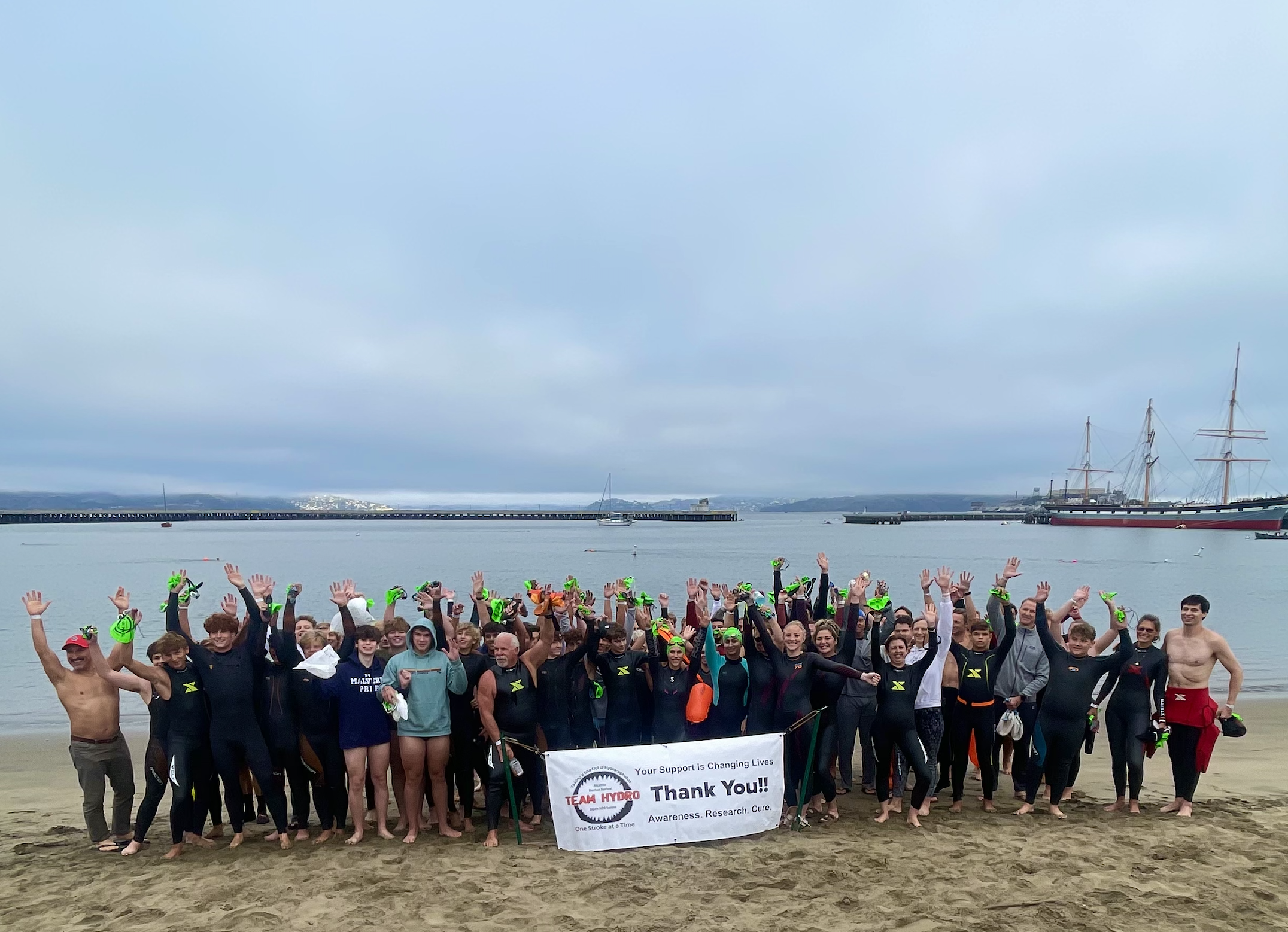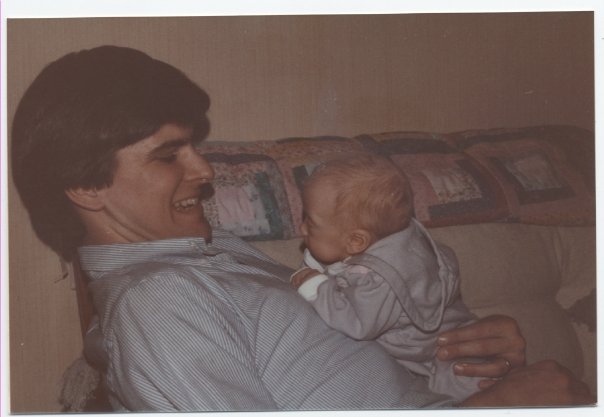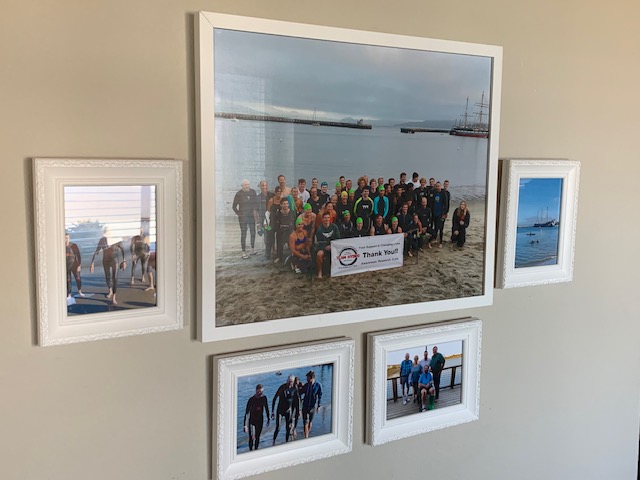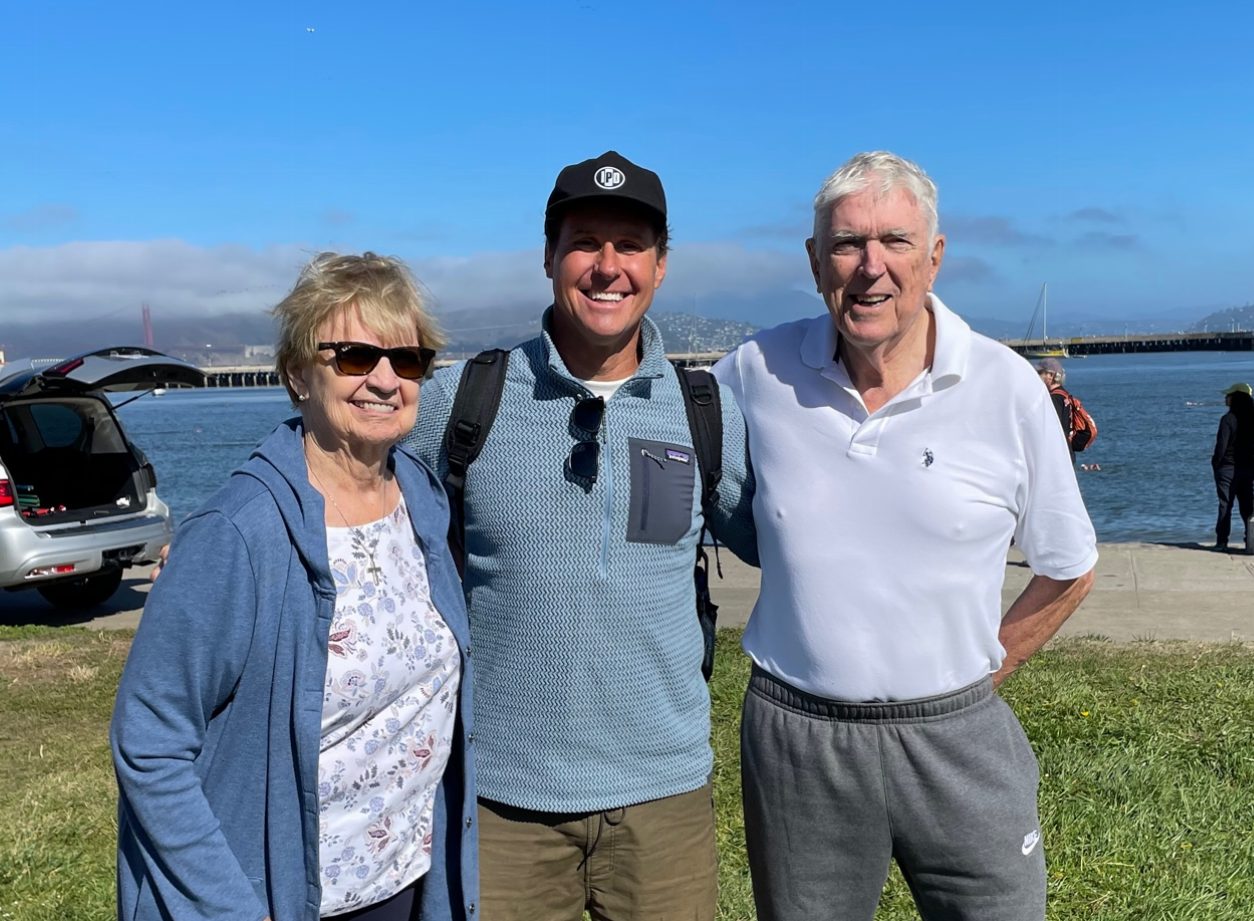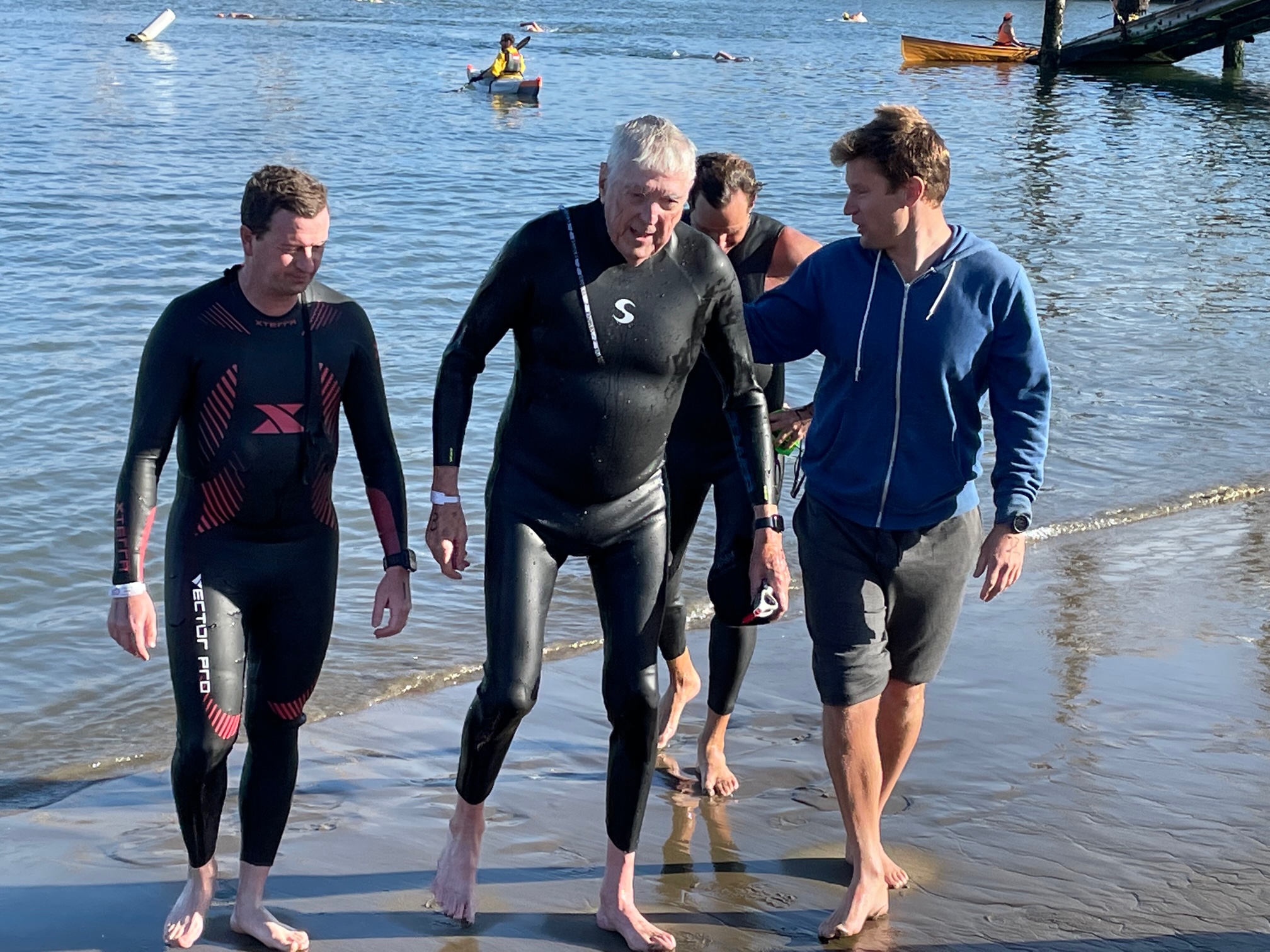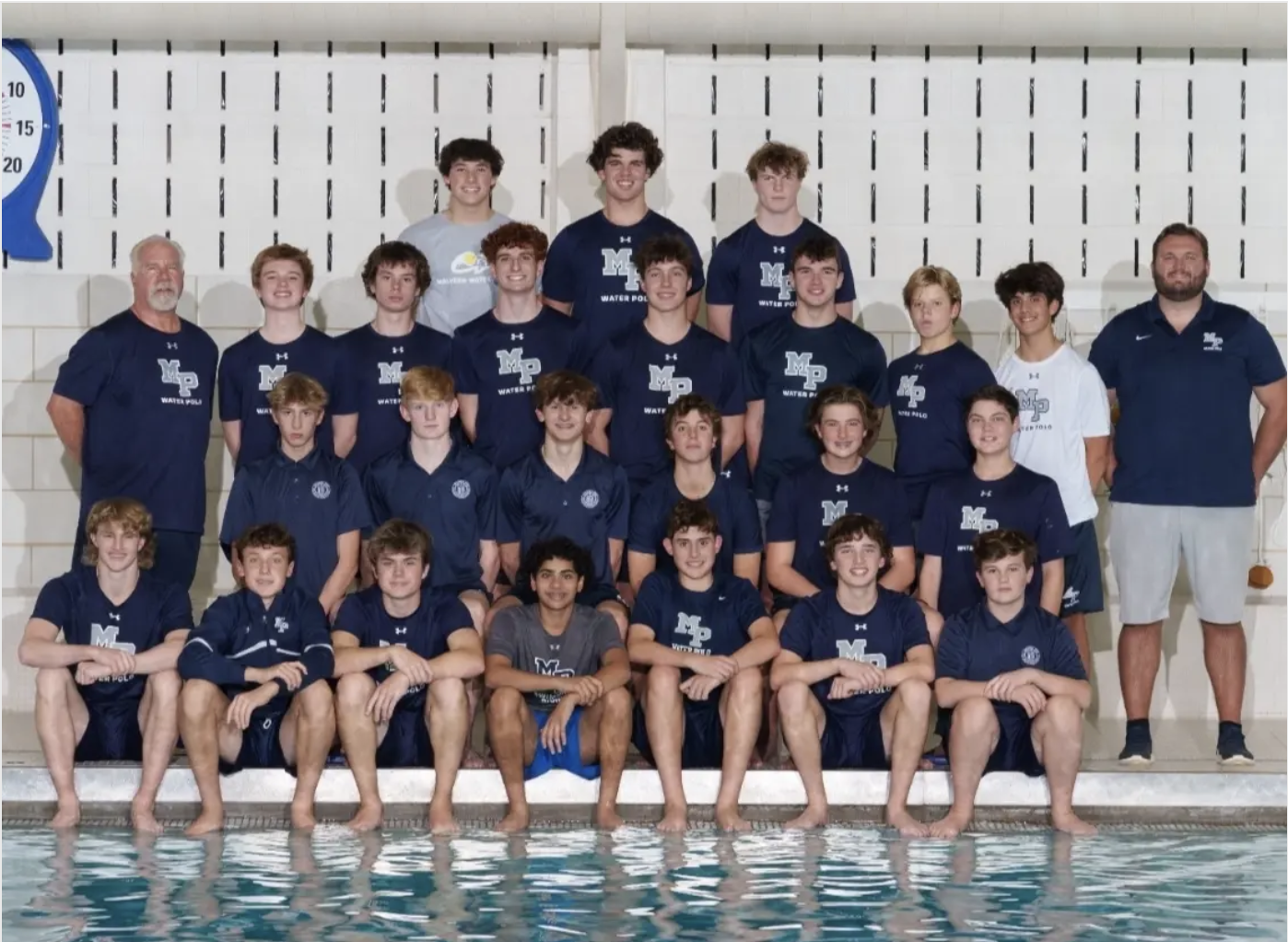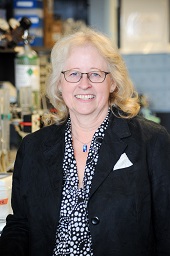
Dr. Bonnie Blazer-Yost, Ph.D receives $11.3 MILLION from DoD to expand her research; Indiana University-Purdue University to establish dedicated Hydrocephalus Research Center!
Last year Team Hydro was proud to sponsor Dr. Blazer-Yost by funding an Innovator Award through the Hydrocephalus Association to study a new possible treatment for hydrocephalus targeting a gene called TRPV4. Based on the results of this work, her team has now received a $7.8M Focused Program Award to test TRPV4 agonists in two rat models, and a $3.9M Expansion Award to test an oral TRPV4 agonist in a pig model. These projects and funding will be used to establish a new, permanent Hydrocephalus Research Center at her university. What a return on investment!
2022 wasn’t the first time Team Hydro provided essential funding to Dr. Blazer-Yost’s team. In 2015, Team Hydro funded another grant to support her work studying the pharmacologic modulation of cerebrospinal fluid production. She put these funds to fantastic use, producing results that helped uncover new insights into the molecular mechanisms behind CSF and Hydrocephalus and allowed her to receive a highly competitive, ~$1.3 million grant from the Department of Defense, so that she can develop her insights into potential pharmacologic therapies! Where else can you see such dramatic impact of research dollars at work?
We caught up with Dr. Blazer-Yost to hear about what brought her into Hydrocephalus research and to learn more about her exciting vision for the future.
TEAM HYDRO: You just shared with us some extraordinarily exciting news that you’d received BOTH the Focused Program Award and the Expansion Award from the DoD. These awards were made possible in part by research conducted using the funds from Team Hydro grants. Could you share a little bit more about the awards and what they will allow you to do?
DR. BLAZER-YOST: Both awards represent collaborative research with multiple investigators. The Focused Program Award has 4 Principal Investigators and is shared equally between Indiana University Purdue University Indianapolis (IUPUI) and Johns Hopkins University. The Hopkins investigators are Drs. Shenandoah Robinson and Lauren Jantzie; the IUPUI investigators are Dr. Teri Belecky- Adams and myself. At IUPUI we have a genetic rat model of hydrocephalus and are treating with the TRPV4 antagonist. At Hopkins the investigators have induced rat models of post- hemorrhagic and post traumatic hydrocephalus and they are treating with erythropoietin and melatonin, two anti-inflammatory and neurorestorative agents. With the grant we propose to try all treatments in all models and then explore the efficacy of triple co-therapy since all of the agents work differently. Each of the investigators will also have independent projects looking at sequalae of hydrocephalus such as vision changes, inflammatory and pain responses, and changes in brain tissue.
As part of the Focused Program Award, we proposed establishing a Hydrocephalus Research Center. One of the primary goals of the center is to catalyze interactions between investigators interested in hydrocephalus. Our preliminary discussions with clinicians and investigators at the Indiana University School of Medicine have been very positive and we hope to broaden the
utility of the center to investigators in other institutions around the world. We would like to be able to provide some support for students and junior scientists to cross-train in different disciplines as well as to bring established investigators together for in-depth discussions and cross-fertilization of ideas.
The Expansion Award, as the name suggests, is meant for investigators who have had previous DoD funding. This award is in collaboration with the Veterinary School of Purdue University to use a pig model of post-hemorrhagic hydrocephalus to test our TRPV4 antagonist as part of our progression toward drug development. This grant also contains a component using cultured cell
lines (human and pig) to study inflammatory mediators.
TEAM HYDRO: Prior to these two latest exciting awards, partially fueled by the data generated using that initial seed grant from Team Hydro, you were able to secure a remarkable $1M award from the DoD to continue further research. What did that first $1M DoD grant allow you to uncover?
DR. BLAZER-YOST: The first DoD grant allowed us to make progress in several directions and to publish much of the work. We fully characterized the hydrocephalus in our rat model and completed a treatment with the potential candidate drug, a TRPV4 antagonist. These studies included MRIs and further studies of the brain tissues. We developed and characterized several mice models of hydrocephalus. We also characterized and studied what is called a continuous cell line of the choroid plexus epithelial cells, the cells in the brain that produce most of the cerebrospinal fluid. Continuous cell lines can be stored in liquid nitrogen and gotten out and used months or years later. The human choroid plexus cell line, while very difficult to grow, is valuable for studying how the drug works in just the cells of interest and is also important for the initial testing of new drug candidates. For example, this cell line allowed us to look at the effect of an SGK1 inhibitor which we are now exploring in animals with a new Team Hydro grant. Finally, we also looked at changes in other parts of the brain and obtained preliminary data for the next series of studies.
TEAM HYDRO: Team Hydro provided you an additional grant last year to allow Preclinical Testing of SGK1 Inhibitor in hydrocephalus. What learnings did that research yield?
DR. BLAZER-YOST: That grant allowed us to further develop some preliminary data regarding a new potential compound, an SGK1 inhibitor, and move the project to the point of publication (manuscript in review). The SGK1 inhibitor works on an enzyme in the biochemical pathway controlling TRPV4 activity. This is a novel compound provided by an Italian collaborator from my renal research days. Importantly, we are working to develop a formulation for this compound which would be compatible with human use. The inhibitor is very hard to get into solution and the solvent we use for injecting the rodents cannot be used in humans. I think we have found a useable formulation which we tested in rats as part of the Team Hydro funding. Early MRI results are encouraging. We have also collected tissue from the treated rats to determine whether changes that occur in hydrocephalus are reversed with the drug. Those studies are on-going.
TEAM HYDRO: But even after all those remarkable findings, funding wasn’t easy to come by, and the path towards a drug in humans remained daunting — what obstacles did you face?
DR. BLAZER-YOST: There are two major obstacles – funding and drug development. Funding is always an issue for scientists. Both of the large grants which we were fortunate enough to obtain recently represent 3-4 years of major grant writing. In each case we were turned down in two previous attempts – each one year apart. It is only because of the team effort of all the Investigators involved in responding to reviewer comments and scrambling to obtain additional preliminary data that we were ultimately successful.
Drug development is another whole story. After the pre-clinical animal studies, my expertise ends and this has to be turned over to a company for further development and clinical trials. Several things are necessary before pharmaceutical companies are interested. Importantly, the efficacy has to be shown in several rodent models and then, preferably, in a large animal model.
One of the grants will allow us to address the former and the second will provide funds for the latter. Even after all of that, there are many other aspects, unfortunately not all scientific, that determine whether a company will be interested in further development.
TEAM HYDRO: You’ve had a remarkable career and are an accomplished researcher. Could you share again a bit about yourself and your lab? In particular, as you continue in the day- to-day trenches of the lab, what is your motivating vision for future hydrocephalus patients?
DR. BLAZER-YOST: I have always had a passion for science and that fascination continues to this day. As I tell my trainees as they are beginning their careers – research is not a 9 to 5 job. However, if one enjoys the challenge of this endeavor it is a very rewarding career. I thoroughly enjoy what I do and the brilliant people I get to work with. Science is a team effort, and I am grateful for the opportunity to work with trainees and colleagues at my home institution as well as those in other universities. Without that community of science support, it would be difficult to get through the “down” cycles in the trenches when nothing seems to work. If the studies we are doing can make a difference to the development of treatments for disease that makes all the time and effort so much more worthwhile. I am delighted to be contributing to hydrocephalus research and I would love to see the collective efforts of researchers have an impact on patient care.
TEAM HYDRO: You haven’t always been focused on hydrocephalus research and were once a kidney researcher. Could you relate again how you found your way into hydrocephalus research, and the role the 2015 Team Hydro grant played in that process?
DR. BLAZER-YOST: Throughout my career I have studied the regulation of biochemical processes that control electrolyte and water balance which are important to maintain health of every organ in the body. The majority of my years in research have been in the kidney field studying hormonal influences on electrolyte transport proteins with a view toward understanding and treating hypertension, the renal components of metabolic syndrome/obesity and polycystic kidney disease. While I was studying polycystic kidney disease, one of the drugs we were testing in rat models brought me to the hydrocephalus field. One of the rat models had both polycystic kidney disease and hydrocephalus. Because we knew quite a bit about the biochemical mechanisms involved in polycystic kidney disease, we postulated an electrolyte channel called transient receptor potential, vanilloid 4 (TRPV4) would have an effect on that disease. As it turned out, there was little effect on the kidney in the model we were using but a substantial effect on the development of the hydrocephalus. This was a very interesting finding that was hard to ignore so a colleague and I were lucky enough to get some internal university funding in the way of a small pilot grant from the Radiology Department at the Indiana University School of Medicine to do a few MRIs to prove what we were seeing in changes of rodent head sizes was real. Unfortunately, during those studies, my colleague passed away from cancer. I inherited the rat model and the project.
Although I was involved in a clinical study of patients with polycystic kidney disease, I decided to see if we could get funding to continue the hydrocephalus research. I was very fortunate in that Team Hydro funded our grant application which is what allowed us to continue and expand these preliminary studies.
TEAM HYDRO: One thing that has always been clear in talking with you, Dr. Blazer-Yost, is your relentless commitment to seeing hydrocephalus research translate into impactful new treatments for patients. What is your current state of optimism about that goal? What does that path look like going forward?
DR. BLAZER-YOST: I am very optimistic about the path forward. The Hydrocephalus Association supports scientific meetings within the hydrocephalus research community and it is at those meetings that I have had the pleasure of getting to know colleagues who are all working toward the same goal. It was at one those meetings that I first met Drs. Jantzie and Robinson. Our shared interests and collaboration has lead, over a period of about 5 years now, to the Focused Program award.
During these meetings, and then in the scientific literature, it is clear that the number of basic and clinical researchers devoting their efforts to hydrocephalus research has increased enormously in the last 5 years and many of these investigators are applying a wide range of approaches to this field. With this diverse approach it is more likely that major breakthroughs will happen. However, I must temper these comments with the reality of drug development which is costly and time consuming and often fails for the wrong reasons. Despite this, we will keep moving forward.
TEAM HYDRO: We are absolutely thrilled you and your team have committed yourselves to hydrocephalus research, and so see the progress you’re making. Could you comment for our donors on the important role that Team Hydro grants played in the research process, and how they allowed you to unlock these larger awards? In other words, why should people donate to Team Hydro? :).
DR. BLAZER-YOST: I hope that my journey into hydrocephalus research underscores the need for funding for “high risk” projects. Because many of these projects fail, the large funding agencies devote little money to any projects that do not have substantial preliminary data to indicate the studies are likely to be successful. However, some of the most exciting advances in science are the result of failed hypotheses. Having the ability to follow those failed hypotheses (as I did) in risky projects often leads in unexpected directions and wonderful new discoveries. Team Hydro has supported my research through some risky endeavors and I know that you do similar things for other investigators. One cannot underestimate the importance of this type of funding in moving science forward and this is a very important contribution to the overall progress toward better treatments.
TEAM HYDRO: Is there anything else you’d like to share with Team Hydro supporters?
DR. BLAZER-YOST: The funding that Team Hydro provided had a huge impact on my research at a critical time. I think it is also important to recognize the founders, the amazing Finlayson family, who I have come to know over the years. Their interest, enthusiasm and cheerleading are a constant reminder to so many of us that there is a very important goal at the end of all of these studies. [editor’s note: The Finlaysons are so humbled by the success of the research Team Hydro has enabled, and is SO GRATEFUL to Bonnie for her relentless work in the lab, and to our many swimmers and supports who make funding these grants possible!]
—
Dr. Blazer-Yost’s work is a perfect example of everything we hope to achieve in supporting research through Team Hydro: Not only does her work hit straight at the heart of Hydrocephalus on a molecular level, with exciting promise for non-invasive therapies, but it also has brought a new set of brilliant minds into the field of Hydrocephalus research, and laid a foundation for future breakthroughs and meaningful progress for patients for years to come.
But there still remains much to be done! At Team Hydro, we are committed to supporting the next wave of researchers seeking to understand and cure this neglected yet terrible disease. Let’s keep pushing!
Go Team Hydro! Together we can CURE hydrocephalus!



















